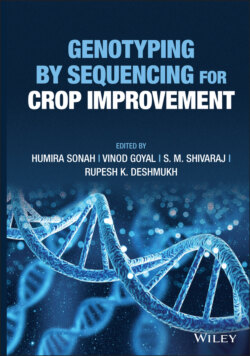Читать книгу Genotyping by Sequencing for Crop Improvement - Группа авторов - Страница 23
1.3.2.6 Expressed Sequence Tags (ESTs)
ОглавлениеThese markers are developed by end sequencing (generally 200–300 bp) of random cDNA clones. The sequence thus obtained is referred to as expressed sequence tags (ESTs). A large number of ESTs have been synthesized in several crop plants and are available in the EST database at NCBI (https://www.ncbi.nlm. nih.gov/dbEST/). These markers were originally developed to identify gene transcripts and have played important role in the identification of several genes and the development of markers such as RFLP, SSR, SNPs, CAPS, etc. (Semagn et al. 2006). However, EST‐based SSRs show less polymorphism as compared to genomic DNA‐based SSRs. Since EST markers are from expressed sequence regions, these are highly conserved among the species and can be used for synteny mapping. Most of these could also be functional genes. A large number of EST markers have been used in rice for developing a high‐density linkage map (Harushima et al. 1998) and for chromosome bin mapping in wheat using deletion stocks (Qi et al. 2003). In addition to these, several other molecular marker variants have been developed. The description of those markers is presented in Table 1.1.
